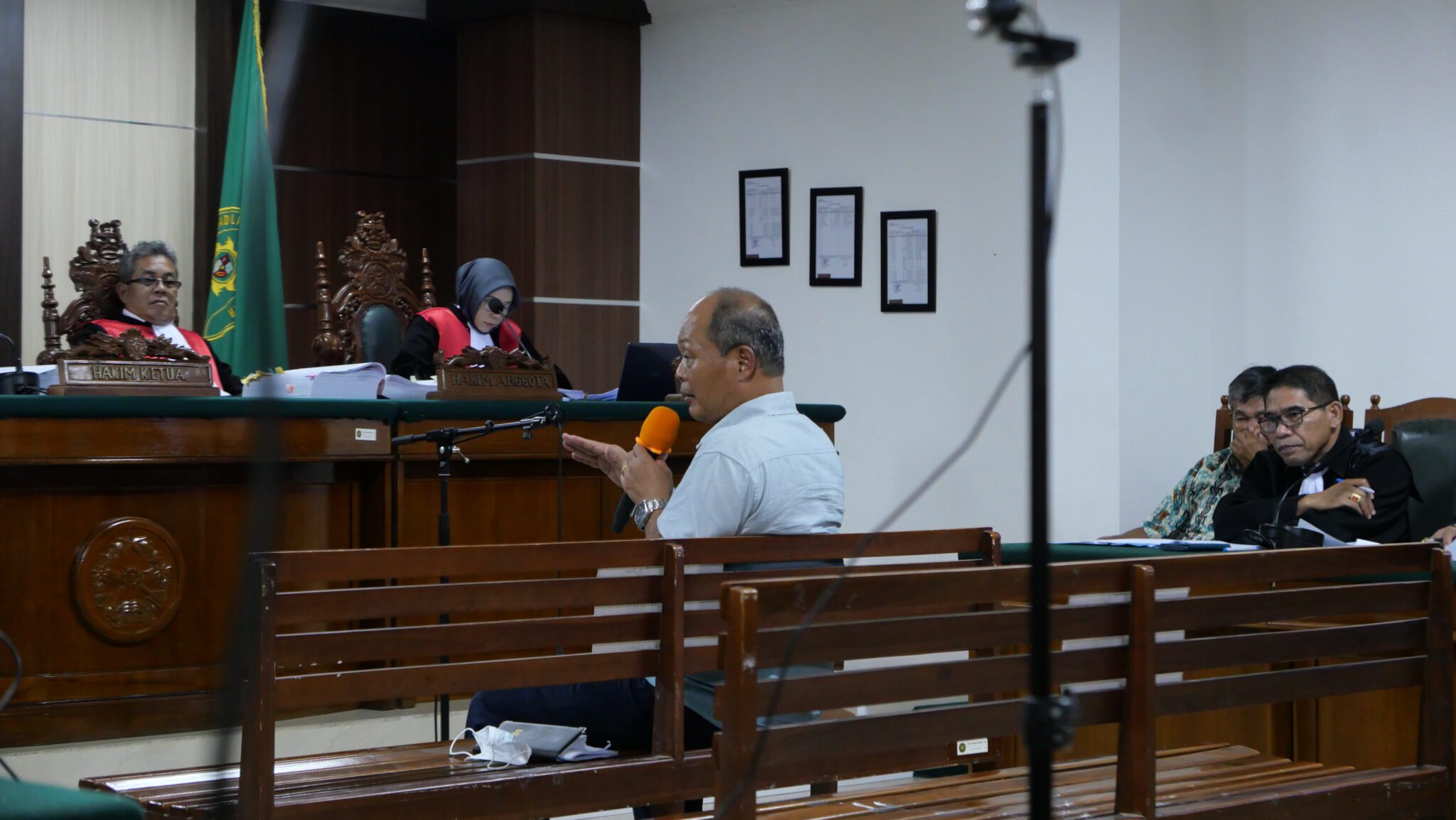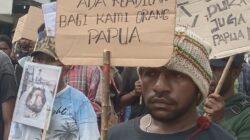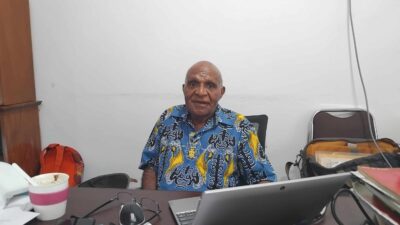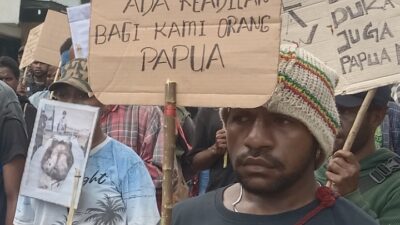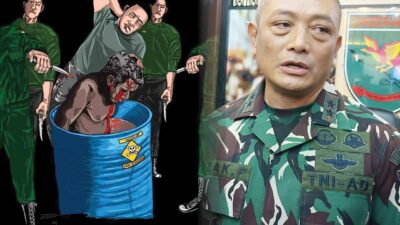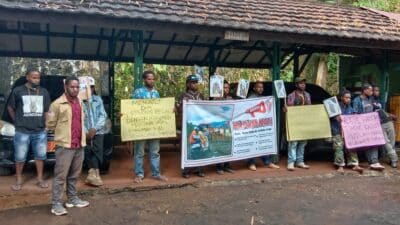Makassar, Jubi – During the trial of Bloody Paniai gross human rights violation at the Makassar Human Rights Court on Monday, October 3, 2022, the defendant’s lawyer, Syarir Cakkari questioned why the police did not follow up on a number of alleged criminal acts in the Bloody Paniai series of events. He considered his client, Maj. (Ret.) Isak Sattu, was discriminated against because he was the sole defendant in the case.
Syarir stated this when questioning the former Head of the Paniai Police Criminal Investigation Unit, Adj. Comr. Mansur, who was a witness in the case.
Syarir asked, among other things, why there was no legal process against the TNI soldiers who persecuted Benyamin Kudiai, Yosafat Yeimo, Noak Gobai, and Oktofince Yeimo on the evening of December 7, 2014.
Syarir also questioned why the perpetrators against police and TNI cars were not prosecuted. “From the persecution against residents in Pondok Natal on the evening of December 7 to the destruction of the car the next morning, there should have been an examination against the perpetrators,” said Syarir.
“There are nine police reports but only one was followed up, namely the incident at the Karel Gobay field, which killed four people. What is the position of other perpetrators in the eyes of the law?” he added.
In the Bloody Paniai case, Isak Sattu was the sole defendant examined and tried by a panel of judges led by Chief Judge Sutisna Sawati with Member Judges Abdul Rahman, Siti Noor Laila, Robert Pasaribu, and Sofi Rahman Dewi.
The trial on Monday presented three witnesses from the police, including the former Head of the Paniai Police Criminal Investigation Unit, Adj. Comr. Mansur. In his testimony, Mansur admitted that a number of alleged criminal acts in the December 8, 2014 incident were not followed up. “It stopped at police reports,” he said.
Mansur said he was not at the locations of the various events on December 8, 2014, both at Pondok Natal and Karel Gobay Field. At the time, he and his team were conducting an investigation at the Paniai General Election Commission office that caught fire the night before. However, the series of events was included by Mansur in the police report file as a unity in the Bloody Paniai incident.
On December 10, 2014, the Papua Police ordered Mansur to join the Police forensic laboratory team consisting of the Papua Police, Paniai Police, Timika Police and Nabire Police. According to Mansur, the team then conducted a crime scene investigation.
The team has also conducted a post-mortem on the four students who died in the Bloody Paniai incident. However, Mansur said he did not know the results of the post-mortem. “There was a post-mortem on the victims but I don’t know the results,” Mansur said.
Mansur said the police had difficulty following up on the other alleged criminal offenses because the community did not open up after the shooting that killed four students in Bloody Paniai. The police also had difficulty identifying the perpetrators in the other eight police reports. “The consideration was that the perpetrators were the masses,” Mansur said.
Syarir, who was not satisfied with such an answer, questioned Mansur further. “There was one young man who came to hit the vehicle with an axe. This is one person, not a mob, the police should be able to identify him but why didn’t you?” said Syarir.
“I can’t answer that question,” Mansur replied.
For Syarir, the court case file was unclear, as the names of those involved in the Paniai incident were not properly identified. Syarir, who was not satisfied with Mansur’s explanation, felt that his client, Isak Sattu, was being discriminated.
“Why is the handling in the legal process not according to what happened in the police report? It’s like there is discrimination in law enforcement,” said Syarir. (*)


